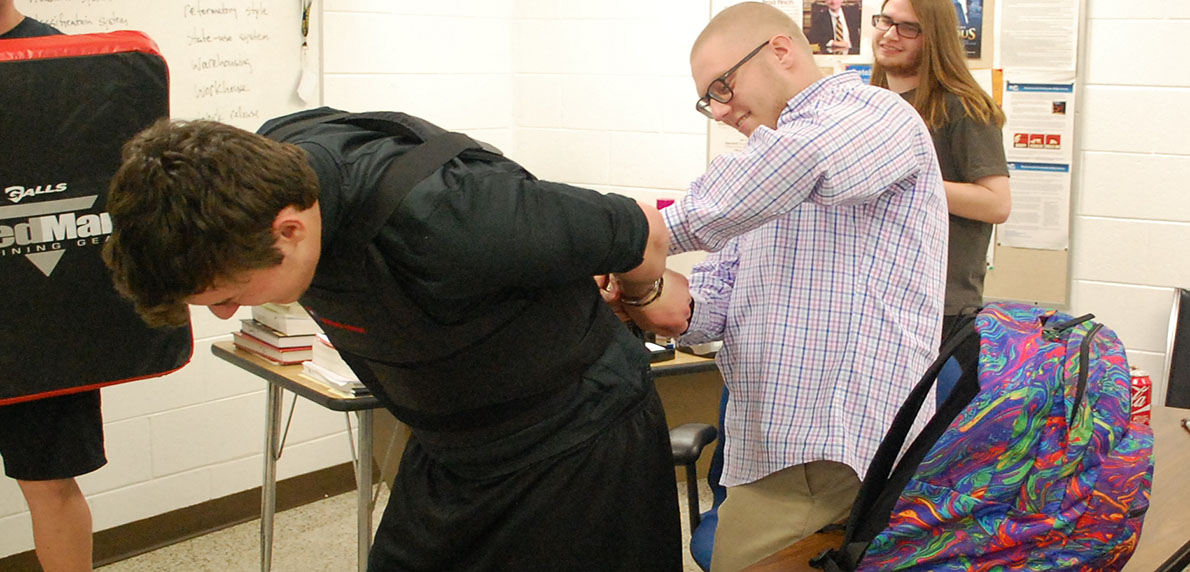The Criminal Justice program at the Rowanty Technical Center introduces the student to the three major components of the Criminal Justice System: law enforcement, courts and corrections. The program is designed to prepare students for immediate employment upon graduation in the areas of private security, corrections, and emergency communications (9-1-1 operations). Students with an interest in law enforcement will receive appropriate training in the program, but will be restricted by age requirements in most law enforcement careers. Students with interests in community corrections (probation officer) or the legal community (attorney) will receive a proper foundation of education and training, but will have to continue their education in a college programs to meet that employment requirement of these career choices.
Rowanty Technical Center’s Criminal Justice program is a two-year, four semester program offering dual enrollment with John Tyler Community College. Qualified students will have the opportunity to earn up to 12 college credits over the two years of the program. Beyond earning college credits, the Criminal Justice Program at Rowanty will provide an opportunity to learn, practice, and apply tactical training in the three major branches of the American Criminal Justice System: law enforcement, courts, and corrections. Included in this training environment will be traffic stops, fingerprinting, crime scene investigations, handcuffing, basic defensive tactics, room & building searches, cell extraction, and the steps in a criminal trial. Students will also have the opportunity to earn their OSHA 10-Hour General Industry Safety card and become certified in CPR/AED & First Aid. The program is designed to begin developing the student’s foundation of knowledge of the American Criminal Justice System and better prepare the student for a career in criminal justice and continuing their education at the post-secondary level.
First Year:
Survey of Criminal Justice: This introductory course presents an overview of the United States criminal justice system; introduces the major system components–law enforcement, courts, and corrections.
Constitutional Law: This course surveys the basic guarantees of liberty described in the U.S. Constitution and the historical development of these restrictions on government power primarily through U.S. Supreme Court decisions. Reviews rights of free speech, press, assembly, as well as criminal procedure guarantees and protections (counsel, jury trial, search and seizure, self-incrimination, etc.) as they apply to the activities of those in the criminal justice system.
Second Year:
Criminal Law, Evidence and Procedures: This course teaches the elements of proof for major and common crimes and the legal classification of offenses. Studies the kinds, degrees and admissibility of evidence its presentation in criminal proceedings with emphasis on legal guidelines for methods and techniques of evidence acquisition. Surveys the procedural requirements from arrest to final disposition in the various American court systems with focus on the Virginia jurisdiction.
Law Enforcement Organization and Administration: This course teaches the principles of organization and administration of law enforcement agencies. It includes the studies the management of line operations, staff and auxiliary services, investigative and juvenile units. Introduces the concept of data processing; examines policies, procedures, rules and regulations pertaining to crime prevention. The course also encompasses surveys concepts of protection of life and property, detection of offenses and apprehension of offenders.

